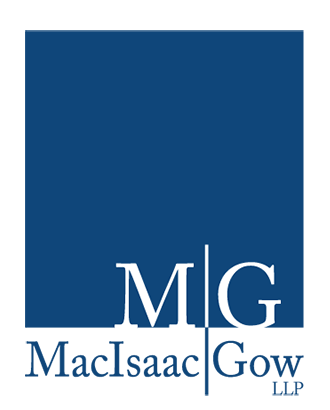Slip and fall occurrences are among the most common yet significant concerns, affecting thousands of individuals’ well-being, yearly. As per the Canadian Institute of Health Information, around 654,000 individuals visited emergency departments for injuries sustained after unintentional falls, constituting nearly a third of all reported ED visits for injury and trauma last year.
However, slip and fall accidents are usually caused by slick surfaces or negligence in some cases and may result in severe injuries. Such incidents can occur in various settings, from frozen sidewalks during winter to wet floors in public spaces, causing significant injuries and carrying legal repercussions. This blog will examine in-depth Information on slip and fall occurrences in Canada. It also discusses its causes and possible injuries from slip and fall accidents.
Comprehending Slip and Fall Scenarios within the Canadian Framework
Canada’s freezing winters and unpredictable precipitation patterns are crucial in enhancing the prevalence of slip-and-fall accidents. A slip-and-fall accident happens when an individual loses traction or stumbles, resulting in a fall to the ground. Besides this, slip and fall accidents can happen anywhere, from public to private spaces, including sidewalks, schools, driveways, parks, workplaces, construction sites, nursing homes, and elsewhere.
Slip and fall accidents may lead to minor cuts and bruises and, in some cases, can result in severe injuries. However, the following are some of the most common slip-and-fall accident injuries:
- Broken bones
- Head and traumatic brain injuries (TBIs)
- Puncture wounds
- Internal bleeding
- Partial or total paralysis
- Spinal cord and nerve damage
- Lacerations
- Death
Why Slip and Fall Accidents Occur
As mentioned, slip and fall accidents are the most common injuries affecting many individuals. Hence, there are countless causes of slip-and-fall accidents, which are as follows:
- Wet and slippery floors
- Icy walkways
- Uneven or damaged surfaces
- Inadequate lighting
- Lack of warning signs
- Improper footwear
- Cluttered walkways
- Defective stairs or handrails
- Unsecured carpets or rugs
- Negligence
The Law Regarding Slip and Fall Accidents in Canada
In Canada, the Occupiers’ Liability Act is crucial in cases involving slip and fall accidents, delineating property owners’ and occupiers’ rights and responsibilities. This legislation places a legal duty on property owners, often referred to as “occupiers” in the law, to ensure that their premises are safe for visitors.
Under this act, property owners are required to maintain their premises in a manner that reasonably ensures the safety of those who enter the property. This duty encompasses various aspects, including regularly inspecting the property for hazards, promptly addressing any dangerous conditions, and providing adequate warnings where necessary.
In instances where property owners fail to fulfill their duty, and someone is injured as a result, the Occupiers’ Liability Act allows for the injured party to seek compensation. This compensation aims to cover the damages incurred due to the negligence of the property owner, such as medical expenses, lost wages, and pain and suffering.
It’s important to note that liability under this act isn’t absolute and may vary depending on the circumstances of each case. Factors such as the nature of the hazard, the foreseeability of the danger, and the reasonableness of the property owner’s actions are all taken into account in determining liability.
By adhering to the principles outlined in the Occupiers’ Liability Act, property owners can help mitigate risks and ensure the safety of all individuals who enter their premises. This not only upholds legal obligations but also fosters a safer environment for everyone involved.
Meanwhile, it is significant to note that there is a restricted timeline for filing a claim following a slip and fall incident, known as the statute of limitations. However, such a timeline may vary depending on the situation. The general limitation period for filing a personal injury lawsuit, including a slip and fall claim, is two years from the accident date.
Under What Situations Can an Owner and Occupier Be Liable?
According to the Occupiers’ Property Act, business owners must maintain the highest standards to keep the people and public that enter their properties safe. The following are some of the unsafe conditions where occupiers may be held liable if someone comes to harm on their premises:
- Poor lighting
- Neglecting to address spills promptly
- Unable to salt, sand, or remove ice promptly
- Infrastructure, including walkways and stairways that are in poor condition, can fall into disrepair or require inadequate maintenance
- Failing to clear debris or secure objects, leading to foreseeable danger
- Uneven or poor walking service can cause discomfort among individuals
- Drowning hazards of which a user was not warned
- Serving alcohol to individuals, resulting in injuries that should have been foreseeable
Seeking Legal Recourse
Lawyers play an essential role in slip-and-fall cases as they hold the expertise to investigate your case to define and demonstrate liability on the property owner’s part. They can assess the significant cause of your fall and additionally gain clarity about whether the property owner contributed to the circumstances or if it was an unavoidable accident.
Slip and fall occurrences are one of common injuries that also carry legal repercussions. However, understanding the legal framework of slip and fall accidents will help property owners and occupiers mitigate risks and assure a safer environment for visitors. It’s significant to note that slip-and-fall occurrences fall under the category of complex legal battles that can often overwhelm anyone. So, seeking a consultation from a dedicated team of lawyers at MacIsaac Gow LLP can help you navigate the complexities of a slip-and-fall claim. Get in touch with us and discuss your legal battle today.

